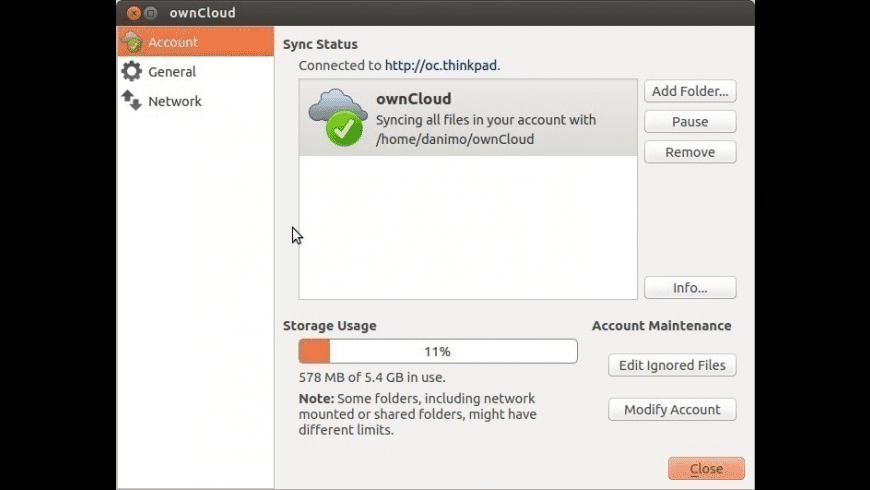You can download the latest version of the ownCloud Desktop SynchronizationClient from the ownCloud Website.There are clients for Linux, Mac OS X, and Microsoft Windows.

In this screencast I cover how to set up OwnCloud on a Mac Mini running OS X Server in a hosted environment. I walk through the installation process includin. The ownCloud application represents the client side of this system. Effortlessly connect to your ownCloud server and sync data between multiple devices. To be able to use the ownCloud application, you must first have access to an ownCloud server, regardless if it is hosted on your own computers.
Installation on Mac OS X and Windows is the same as for any softwareapplication: download the program and then double-click it to launch theinstallation, and then follow the installation wizard. After it is installed andconfigured the sync client will automatically keep itself updated; seeThe Automatic Updater for more information.
Linux users must follow the instructions on the download page to add theappropriate repository for their Linux distribution, install the signing key,and then use their package managers to install the desktop sync client. Linuxusers will also update their sync clients via package manager, and the clientwill display a notification when an update is available.
Linux users must also have a password manager enabled, such as GNOME Keyring orKWallet, so that the sync client can login automatically.
Improvements and New Features¶
The 1.8 client has a number of enhancements and performance improvements,including:

- Graphical selective sync file and folder selector. Select which files andfolders to sync with just a few clicks.
- Selective sync on account setup. Set up which files and folders you want tosync when you create a new ownCloud account.
- File manager integration: share files from Windows Explorer, Mac OS X Finder,and Nautilus on Linux.
- Faster uploads and downloads.
Note
Install Owncloud
When you upgrade from 1.7, restart Windows to ensure that all newfeatures are visible.
Installation¶
The installation wizard takes you step-by-step through configuration options andaccount setup. These examples are on Windows 7; note the new “Integration forWindows Explorer Option”. This allows Windows users to share files directlyfrom their local ownCloud folder in Windows Explorer, rather than having toopen a Web browser and share from the ownCloud Web interface. Mac users get thesame option for Finder, and Linux users for Nautilus.
The next screen selects the installation folder for the client. The default isfine; don’t change this without a good reason.
In the next screen, enter your ownCloud server URL.
Owncloud Desktop
If your ownCloud server has a self-signed SSL certificate, you will see a scarywarning. Check “Trust this certificate” and keep going.

On the next screen enter your ownCloud login and password.

Now you can select while folders and files to sync, and the location of yourlocal ownCloud folder.
When you check “Choose what to sync” it opens a file picker. Note the warningat the top that unchecked folders will be removed from your local filesystem.On a new installation, when you have not yet synced with your ownCloud server,no files will be deleted.
In the next screen you may click to open ownCloud in a Web browser, or openyour local ownCloud folder. Open your local ownCloud folder so you can see howfile manager integration works.
When you are in your local ownCloud folder you can right-click any file orfolder, and then left-click “Share with ownCloud” to create a share link. Note that Windowsmay also have a Share With option. This is not the ownCloud Share option. TheownCloud share dialog looks like the following example:
Owncloud Server Download

You have the same options for creating a link share as you do when you’relogged into the ownCloud Web GUI: you may optionally set a password andexpiration date.
Owncloud For Mac Server Settings
You may change your sync options at any time by opening your ownCloud clientand clicking the “Choose what to sync” button. This opens the same file pickeryou saw in the installation wizard. If you un-check any folders or files thatyou have already synchronized they will be deleted.
Owncloud For Mac Server Versions
Right-click on the systray icon to see more options, such as Open ownCloud inbrowser, Open folder ‘ownCloud’, Recent changes, Help, and Quit ownCloud.
